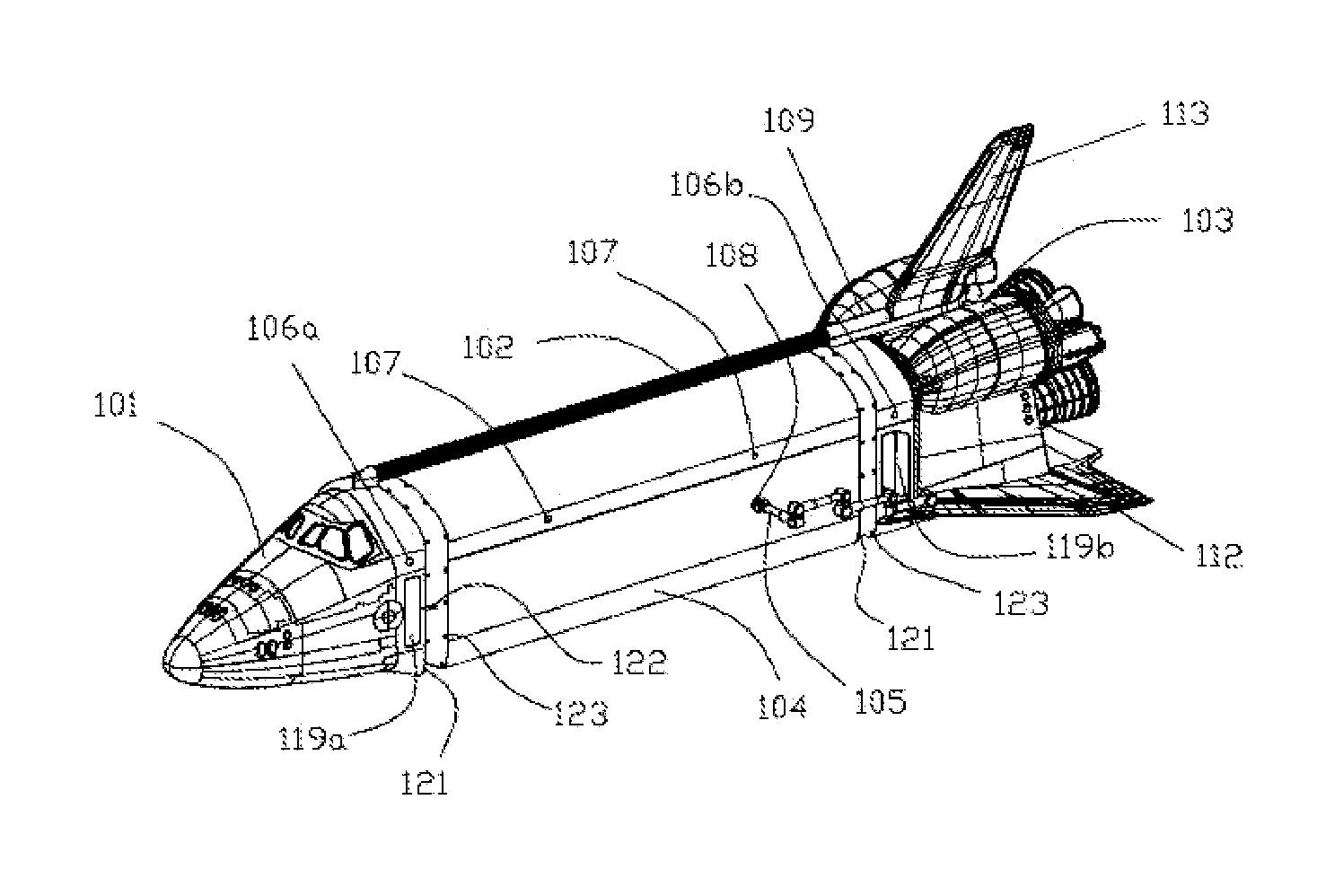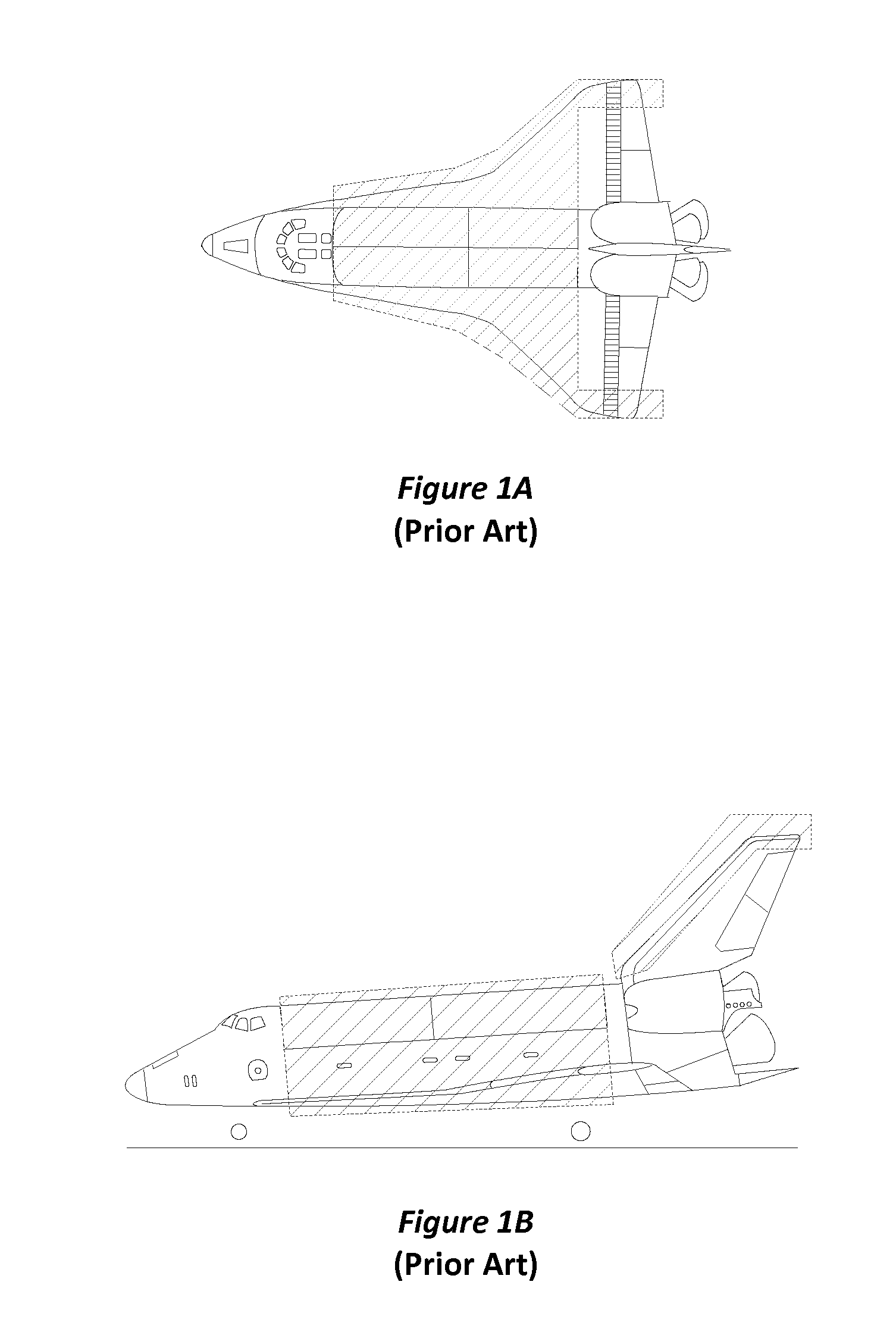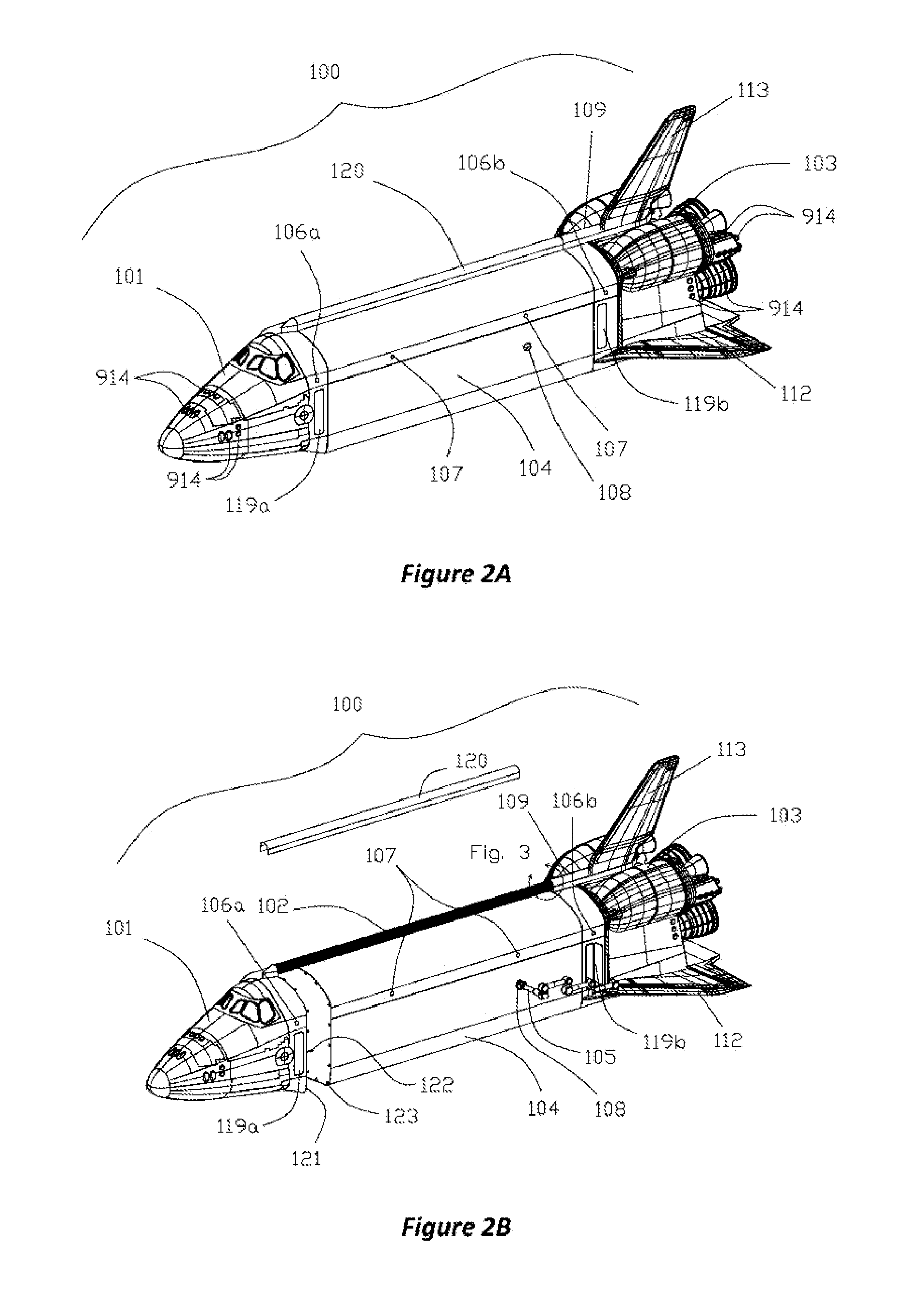Space shuttle orbiter and return system
a space shuttle and orbiter technology, applied in the field of space systems, can solve the problems of fuel and/or structural inefficiency of space launch systems, inability to adapt to the weight and size of payload modules, and high cost of structures
- Summary
- Abstract
- Description
- Claims
- Application Information
AI Technical Summary
Benefits of technology
Problems solved by technology
Method used
Image
Examples
Embodiment Construction
[0066]Specific, non-limiting embodiments of the present invention will now be described with reference to the drawings. It should be understood that such embodiments are by way of example only and merely illustrative of but a small number of embodiments within the scope of the present invention. Various changes and modifications obvious to one skilled in the art to which the present invention pertains are deemed to be within the spirit, scope and contemplation of the present invention as further defined in the appended claims.
[0067]FIGS. 1A and 1B are top and side views, respectively, of a known space shuttle configuration that may be used to deliver a payload module into orbit. The space shuttle orbiter described herein is designed to eliminate a significant portion of the dead weight represented in the shaded portions of the space shuttle and also to provide a degree of adaptability of the orbiter structure based on the weight and size of a particular payload module. The shaded po...
PUM
 Login to View More
Login to View More Abstract
Description
Claims
Application Information
 Login to View More
Login to View More - R&D
- Intellectual Property
- Life Sciences
- Materials
- Tech Scout
- Unparalleled Data Quality
- Higher Quality Content
- 60% Fewer Hallucinations
Browse by: Latest US Patents, China's latest patents, Technical Efficacy Thesaurus, Application Domain, Technology Topic, Popular Technical Reports.
© 2025 PatSnap. All rights reserved.Legal|Privacy policy|Modern Slavery Act Transparency Statement|Sitemap|About US| Contact US: help@patsnap.com



